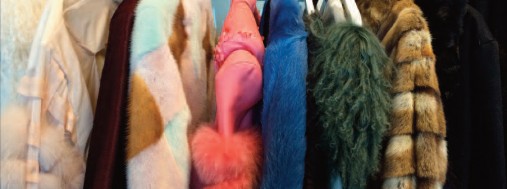Common Myths Around Fur

The International fur trade is unregulated
The production of fur is tightly controlled by state, regional, national and international laws and regulations, in addition to strict industry Codes of Practice. These cover everything from animal welfare to environmental impact and are based on independent, scientifically proven best practices.
Animals are mistreated on fur farms
The livelihoods of all livestock farmers depend on the high welfare of their animals and this is particularly true for fur farmers. As any pet owner knows, the condition of an animal’s coat is one of the clearest indications of the care that the animal is receiving.
Wild animals suffer in unregulated traps
Trapping is a regulated activity. Trapping practices are controlled by laws that ensure animal-welfare standards defined within the Agreement on the International Humane Trapping Standards (AIHTS). These stipulate the means by which traps and trapping methods are evaluated and certified. Most fur-bearing animals are captured in traps that kill virtually instantly. Very few species are captured with modified restraining or cage traps, though these too have been shown to cause few or no injuries. There is NO trade in endangered species and CITES is fully upheld.
Animals are skinned alive for their fur
Not only would this be unimaginably cruel, it would also be highly illegal. The fur trade has always advocated for openness and transparency and the prosecution of anyone found guilty of mistreating animals. It would also be extremely impractical, dangerous and result in a badly damaged pelt, the valuable product that fur farmers work hard to produce.
Fake fur is more sustainable than real fur
Fake fur is produced from petroleum products. These are non-renewable and require huge amounts of energy to extract and manufacture, a process that results in the production of some very unpleasant by-products. On disposal, these synthetic materials will sit alongside plastic bags on the rubbish tips of the future. In contrast, real fur is a natural, renewable resource that can last 40-50 years, after which it will naturally biodegrade. Fur farming recycles left-overs of fish and meat industries. In return waste from fur farming provide natural fertilisers and biofuel.
Dangerous chemicals are used to process fur pelts
The processing or ‘dressing’ of pelts use techniques and chemicals unchanged for hundreds of years, using water, natural salt, alum and oils. Although a small proportion of pelts may then be dyed, the use of chemicals is strictly controlled. For example, the European REACH regulation.
Cats and dog fur are used by the fur trade
Although there are strict laws banning the use of domestic cat and dog species in Europe and North America, members of the International Fur Federation have had in place a voluntary ban that precedes these laws. Not only do these animals belong to private individuals, the fur from such species is simply not suitable for use. The fur trade actively supports legislation that compels the correct labelling of all fur products.
Source: The British Fur Trade Association (BFTA)

